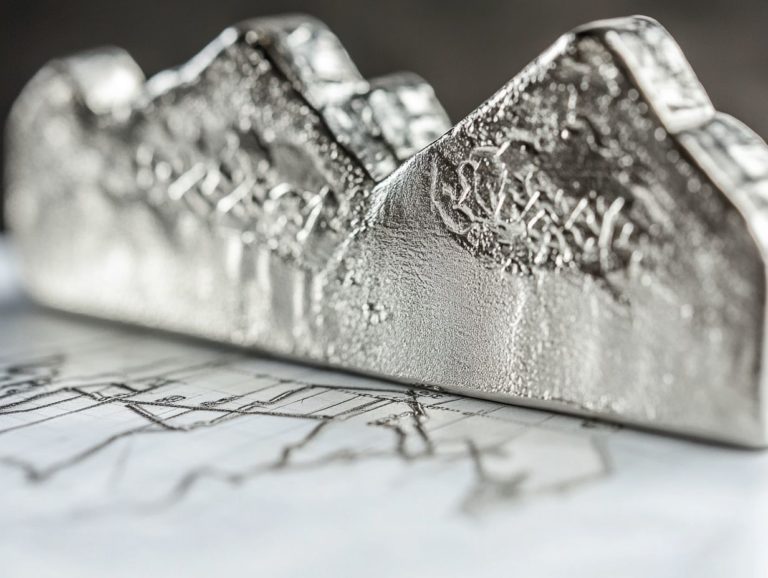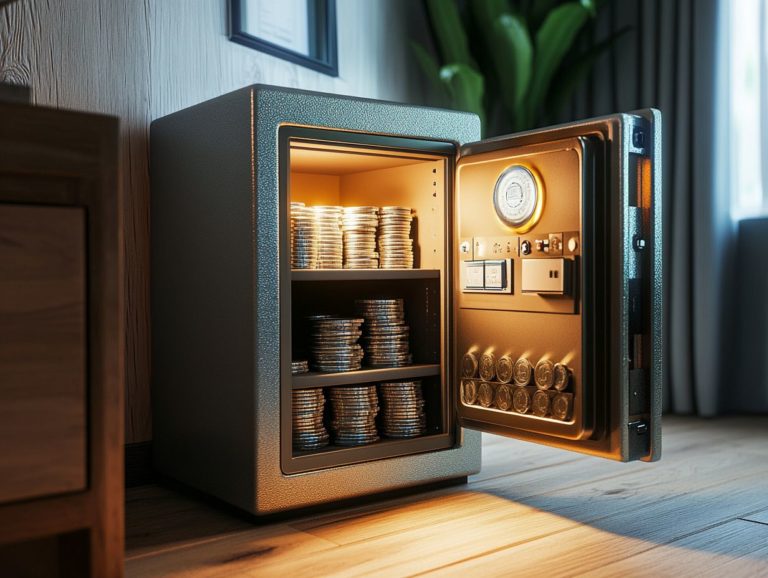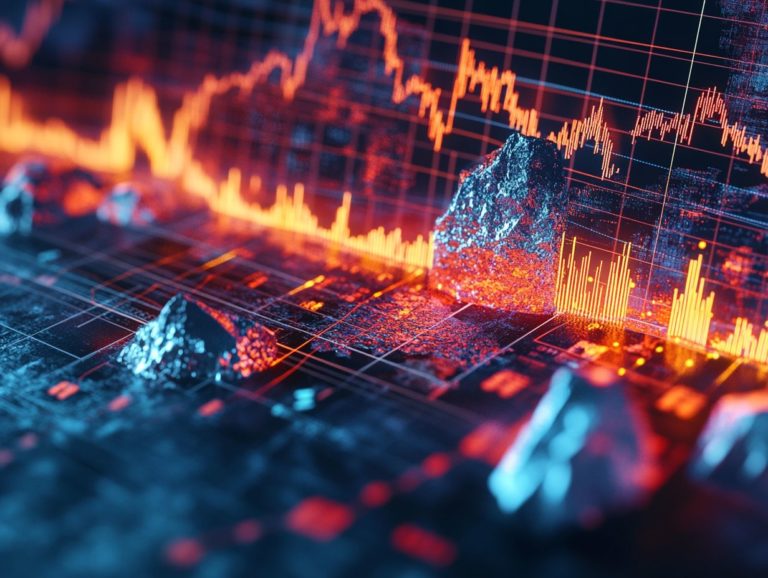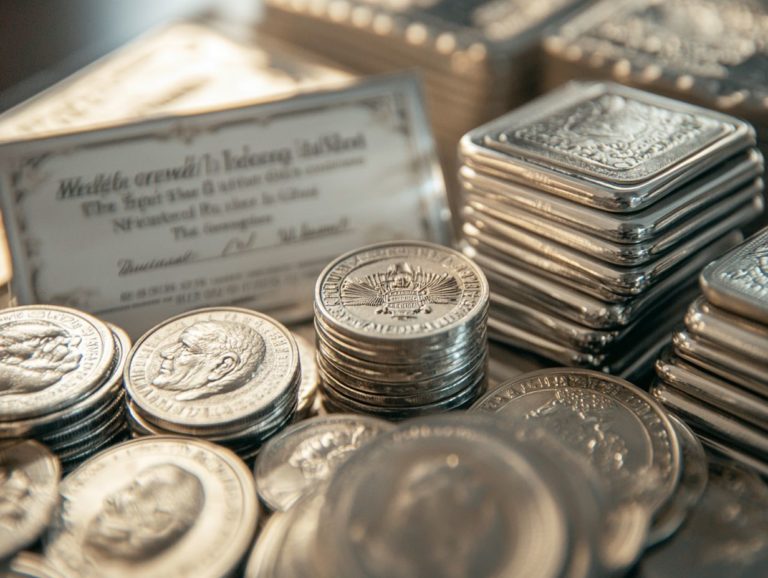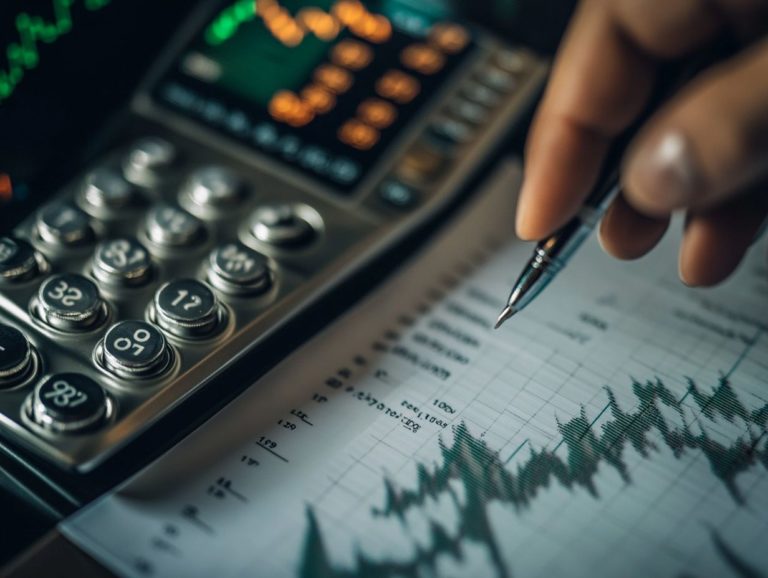5 Innovative Silver Investment Ideas
Silver has long captivated investors with its allure and value. As a precious metal, it is a reliable hedge against inflation.
This guide explores five innovative ways to invest in silver, including ETFs, physical assets, mining companies, and futures.
We will also look at factors influencing silver prices and the risks and tax implications involved.
Whether you re a seasoned investor or just starting, this guide helps you make informed decisions in the silver market. Discover how silver can enhance your investment portfolio!
Contents
- Key Takeaways:
- 1. Investing in Silver ETFs
- 2. Purchasing Physical Silver
- 3. Investing in Silver Mining Companies
- 4. Silver Futures and Options
- 5. Silver Coins and Bullion
- How Can Silver Be a Good Investment Option?
- Frequently Asked Questions
- 1. What are the top 5 innovative silver investment ideas?
- 2. Why should I consider investing in silver?
- 3. How does investing in silver stocks differ from buying physical silver?
- 4. Can I invest in silver without actually buying physical silver?
- 5. Are there any risks associated with investing in silver?
- 6. What factors should I consider before investing in silver jewelry?
Key Takeaways:

- Consider investing in Silver ETFs for a low-cost and convenient way to invest in silver.
- Physical silver can be a valuable addition to your investment portfolio, providing a tangible asset and a hedge against inflation.
- Diversify your investment by looking into silver mining companies that may benefit from rising demand.
1. Investing in Silver ETFs
Investing in Silver ETFs offers a strategic way to diversify your investment portfolio. You can take advantage of easy buying and selling while capitalizing on potential returns from the silver market.
This is especially beneficial during unstable economic times that can impact traditional investments.
Options like iShares Silver Trust allow you to buy or sell silver without the hassle of handling physical metal. This makes it a great choice for those looking to safeguard against market volatility.
iShares closely tracks silver prices, giving you direct exposure to this precious metal. ProShares offers leveraged options for those willing to take more risks for potentially greater rewards.
2. Purchasing Physical Silver
Buying physical silver, such as coins or bullion, provides a tangible way to invest. This direct ownership not only gives a sense of security but also acts as a safeguard against inflation.
Silver offers various forms, catering to both novice and seasoned investors. Options range from government-minted coins to privately minted bars, allowing you to find what suits you best.
Reputable brokers like APMEX and JM Bullion simplify the buying and selling process. Their platforms make it easy to engage with the market confidently.
Being aware of market trends and spot prices ensures a strategic approach to acquiring silver. This flexibility not only enhances your investment but gives you the power to capitalize on market fluctuations.
3. Investing in Silver Mining Companies
Investing in silver mining companies can offer substantial returns and enhance the diversification of your portfolio. This is especially true during economic downturns when traditional stocks may face heightened volatility.
These mining stocks often move in sync with silver prices, creating a direct connection between your investment and the performance of the metal itself. By incorporating companies engaged in silver extraction, you can potentially amplify your gains as silver markets rise.
Prominent players in this sector, such as Pan American Silver and First Majestic Silver, have shown impressive stock performance in recent years. This underscores their resilience and growth potential.
With the ongoing shift towards renewable energy and technological advancements, the demand for silver is set to increase. This makes mining stocks an intriguing and valuable addition to a well-rounded investment strategy.
4. Silver Futures and Options
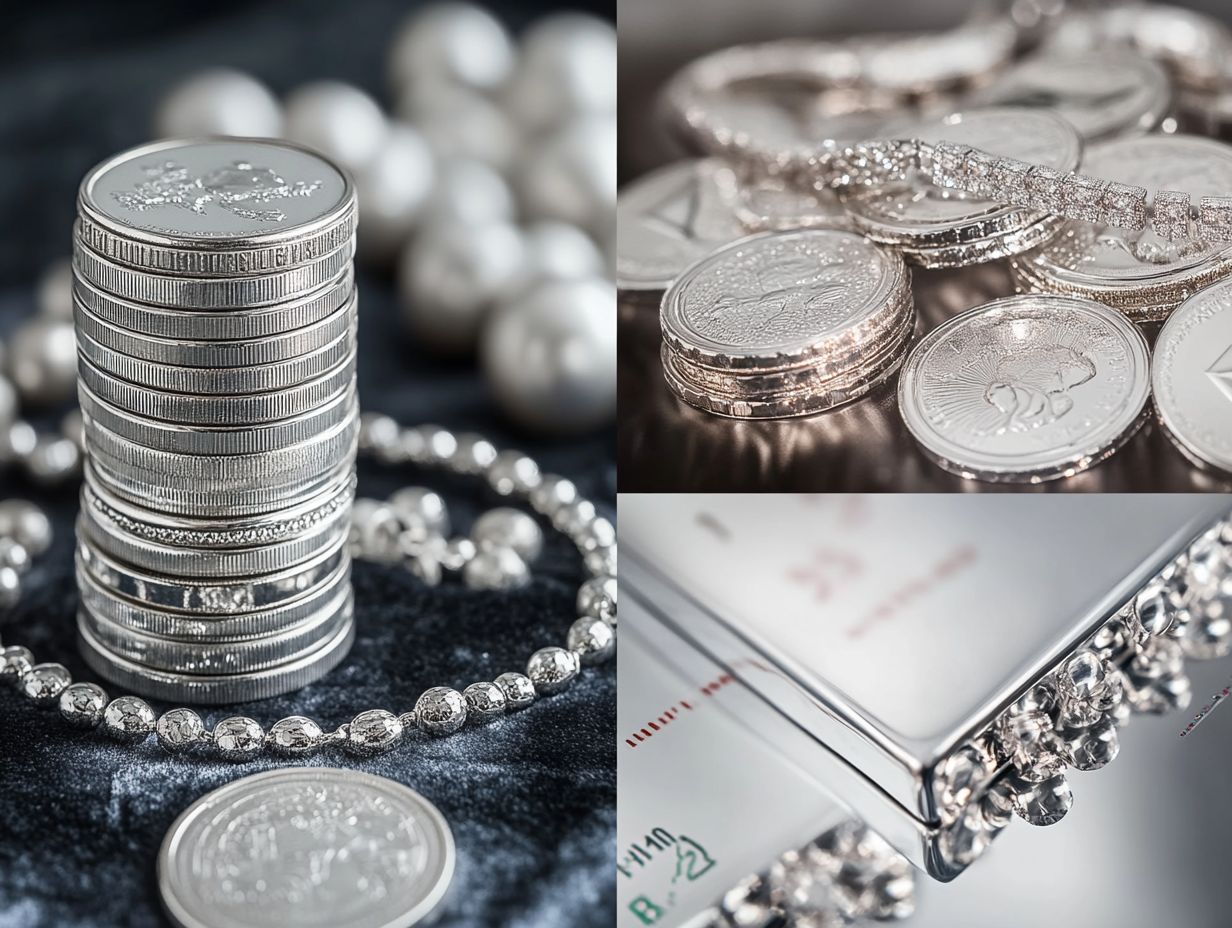
Engaging in silver futures and options trading offers you a unique chance to speculate on market movements. This allows you to take advantage of silver’s price volatility while carefully navigating the risks associated with these contracts.
These financial instruments provide a smart way for hedging against potential losses in the physical silver market, enabling you to position yourself more thoughtfully.
As you consider the various factors influencing silver prices such as global economic conditions, industrial demand, and geopolitical events the complexity of trading becomes clear.
You can capitalize on price fluctuations driven by factors like mining production levels and currency value changes. However, it s important to stay alert to the risks associated with leverage and market timing.
Understanding these elements is essential for anyone looking to trade silver futures and options effectively.
5. Silver Coins and Bullion
Silver coins and bullion present excellent opportunities for you as an investor eager to capitalize on the rising demand for precious metals. They offer not just liquidity but also the tangible allure of wealth, especially in times of economic uncertainty.
Consider the various types of silver coins available, such as American Silver Eagles, Canadian Maple Leafs, and Mexican Silver Libertads. Each coin boasts its own historical significance and distinctive design features, enhancing its appeal.
Beyond coins, you might also explore bullion bars, which come in a variety of sizes and purities. This provides flexibility for your diverse portfolio.
Retailers like APMEX and the Royal Mint offer a broad range of these assets, ensuring you can acquire quality products from reliable sources. With market trends suggesting an increasing interest in silver as a hedge against inflation, don’t miss the chance to learn about silver market insights and how these assets can fit into a broader investment strategy. Especially if you’re looking to diversify your holdings effectively.
How Can Silver Be a Good Investment Option?
Silver is an exciting investment choice, serving as both a hedge against inflation and a reliable asset for wealth preservation. This is particularly true when economic uncertainty looms, and traditional markets may waver.
This precious metal consistently proves to be a safe haven, especially during economic downturns, where its value often holds up better than that of stocks or bonds. Its unique properties make it important across various industrial applications, from electronics to renewable energy, further fueling demand.
As you consider diversifying your portfolio, incorporating silver could be a strategic move to reduce risks tied to market volatility while opening up new growth opportunities. Learning about the future of silver investments can help you adopt such a balanced approach, leading to a more resilient investment strategy that safeguards your assets over the long term.
What Factors Affect the Price of Silver?
The price of silver is influenced by many factors. Key elements include supply and demand, market feelings, inflation rates, and the metal’s diverse industrial applications. Each of these contributes to the volatility of the silver market.
Consider, for example, the economic uncertainties that arise during crises, much like the tumultuous events of 2008. In such times, investors often turn to silver as a safe haven, driving up its price due to heightened demand. When industrial demand surges think of the booming renewable energy sector that harnesses silver for solar panels the market value can see a substantial impact.
Inflation rates often drive investors to gravitate toward tangible assets like silver. By understanding these interconnected factors, you can better understand the complexities behind silver’s ever-fluctuating market.
What Are the Potential Risks of Investing in Silver?
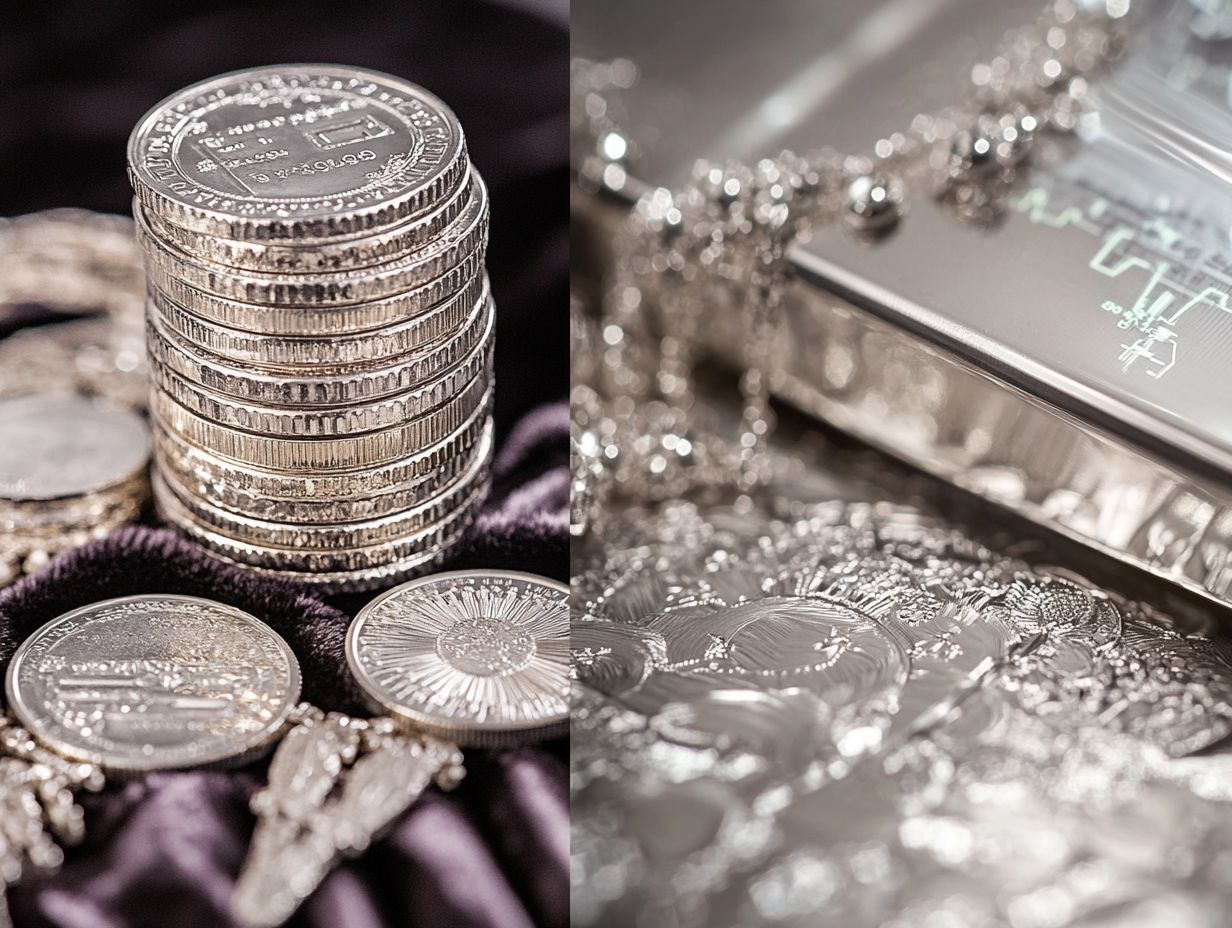
Investing in silver has risks. Market volatility can lead to price swings, impacting buying and selling conditions, especially during economic downturns.
Geopolitical factors can also significantly influence silver prices. Tensions between nations often lead to quick shifts in investor sentiment. For instance, political unrest or changes in trade policies can create uncertainty that impacts the demand for precious metals.
To navigate these risks, consider diversifying your investment portfolio. A mix of assets can help balance the inherent fluctuations of silver. Staying informed about global economic trends and using stop-loss orders, which help protect your investment by automatically selling silver if its price drops to a certain level, can provide additional protection against unexpected market movements. Understanding what drives the silver investment market can also enhance your strategy.
What Are the Tax Implications of Investing in Silver?
Understanding the tax implications of investing in silver is essential. The IRS categorizes it as a collectible, subjecting it to different capital gains tax rates compared to stocks and other commodities.
This classification means that any profits you make from selling physical silver could be taxed at a maximum rate of 28%, significantly higher than the lower rates typically associated with traditional investments. On the other hand, silver exchange-traded funds (ETFs) are generally taxed like stocks, allowing you to benefit from the more favorable long-term capital gains tax rates if you hold them for over a year.
It s crucial to maintain meticulous records. Accurate documentation of all your transactions involving silver such as purchase prices and sale dates is vital for proper tax reporting. This diligence could help you minimize your tax liabilities in the long run.
How Can One Diversify Their Silver Investment Portfolio?
Diversifying your silver investment portfolio is a strategic move that can involve a range of silver assets, such as ETFs, physical silver, and mining companies. This approach allows you to balance risks while maximizing returns.
By thoughtfully selecting a mix of these assets, you can capitalize on the unique advantages each type offers. For example, investing in silver coins and bullion provides tangible value and the potential for appreciation, especially during times of economic uncertainty. For deeper insights, consider the key market indicators for silver investment. Conversely, silver mining stocks give you a front-row seat to the operational success of mining companies, often leading to higher returns when silver prices surge.
Additionally, silver-focused ETFs grant you broad market exposure without the hassle of physical storage. This combination not only helps mitigate risk through asset variety, but it also enhances your potential for growth across different market conditions.
Ready to invest in silver? Start learning more today!
What Are the Long-Term Prospects for Silver Investments?
The long-term outlook for silver investments looks bright and exciting! Driven by strong demand, inflationary pressures, and its appeal as a safe haven, silver is gaining attention.
As global economies face fluctuating interest rates and inflation, silver remains attractive for investors and industries alike. Its versatility makes it a valuable asset.
Investments in renewable energy technologies, like solar panels, are significantly boosting silver demand. These technologies require substantial amounts of silver for production.
Geopolitical tensions also lead many to favor precious metals, including silver. Such shifts highlight silver’s growing importance as an asset class.
All these indicators point to a thrilling rise in silver prices over the long term, making it a compelling choice for your diversified portfolio.
Frequently Asked Questions
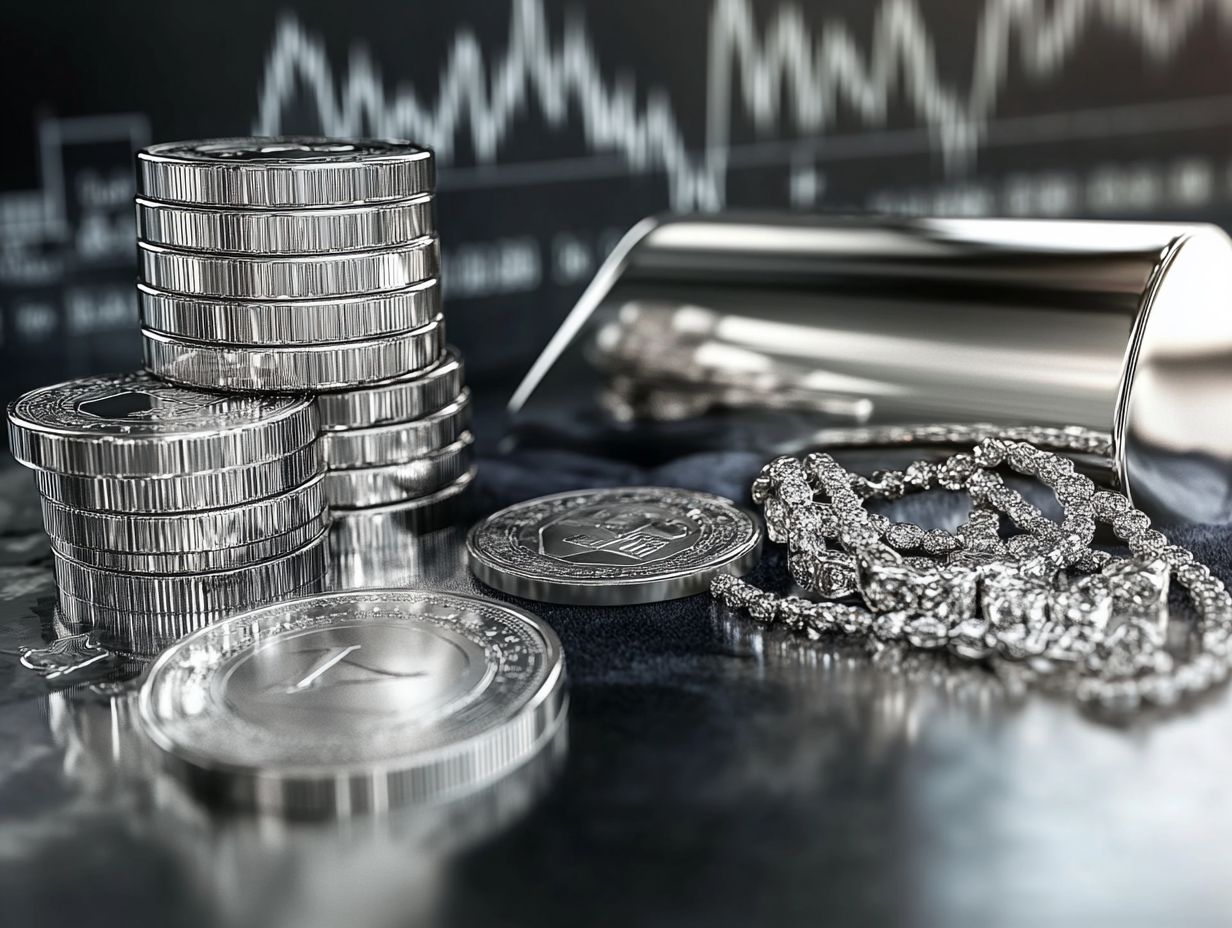
1. What are the top 5 innovative silver investment ideas?
The top 5 innovative silver investment ideas include investing in silver stocks, purchasing silver bars and coins, investing in silver ETFs (Exchange-Traded Funds), buying silver jewelry, and investing in silver mining companies.
2. Why should I consider investing in silver?
Silver is a valuable and versatile metal used as currency for centuries. Its various industrial and technological applications make it a stable and potentially profitable investment.
3. How does investing in silver stocks differ from buying physical silver?
Investing in silver stocks means buying shares of companies that produce or sell silver. This indirect investment is influenced by many factors, unlike owning physical silver, which you can hold and store.
4. Can I invest in silver without actually buying physical silver?
Yes, you can invest in silver without buying it physically. Consider options like silver ETFs, shares in silver mining companies, or silver futures contracts.
5. Are there any risks associated with investing in silver?
Yes, investing in silver comes with risks. Prices can fluctuate based on market conditions, so it’s crucial to research and monitor your investments closely. Also, be aware of storage and handling costs for physical silver.
6. What factors should I consider before investing in silver jewelry?
Research the purity and quality of the jewelry, including the reputation of the seller. Consider the potential resale value and additional costs like insurance or maintenance.










